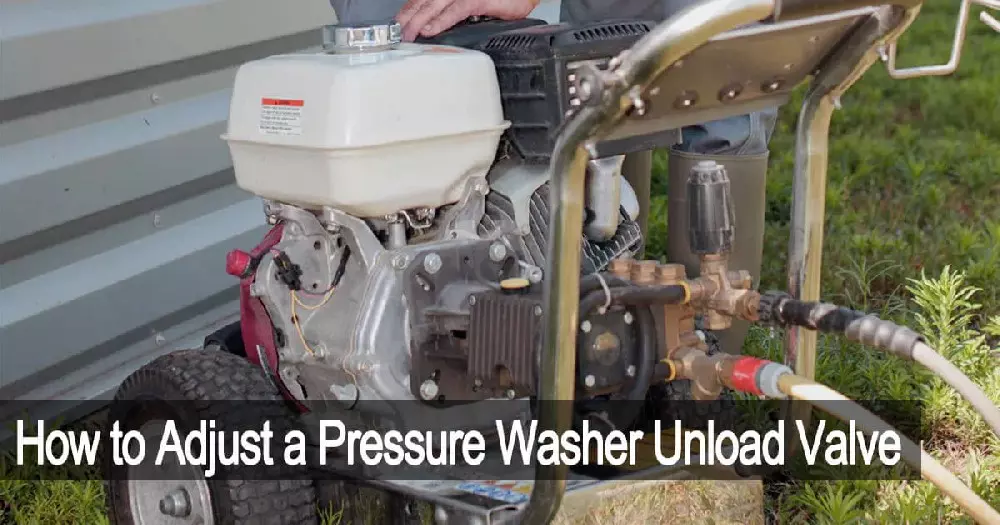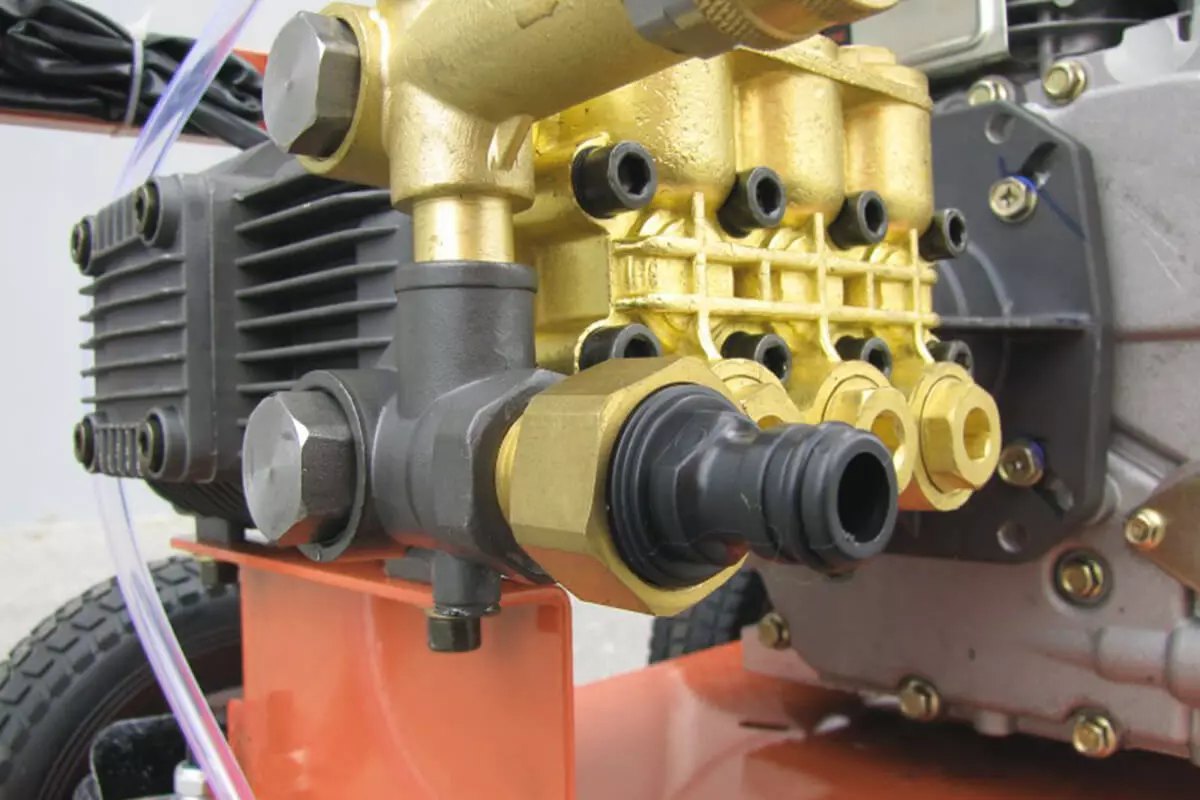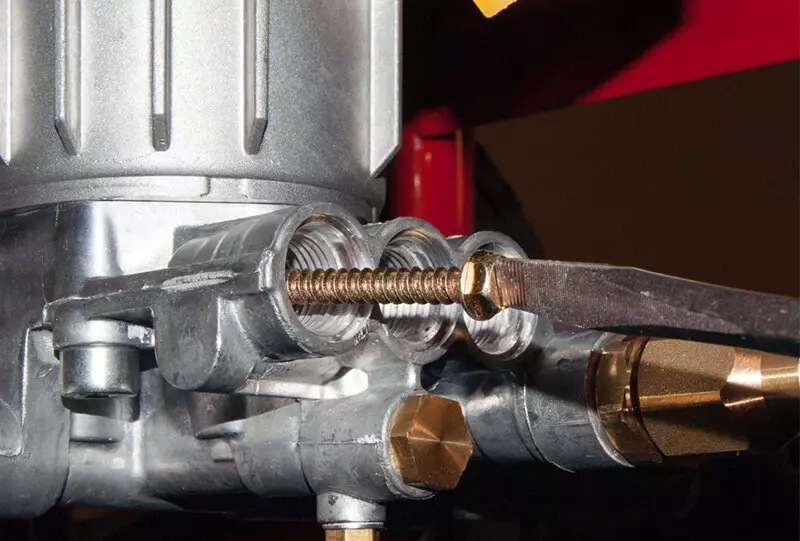17Jun 2023
table of contents
Pressure washer is an essential tool for a variety of cleaning tasks in both residential and commercial settings. BISON is the industry-leading manufacturer of high-quality pressure washers for a wide variety of applications, including washing vehicles, removing surface dirt, and even stripping paint. An important component to ensure optimum performance and safety, the unloader valve is the heart of this robust unit. In this blog post, we'll explore the importance of unloading valves in pressure washers, how to determine when adjustments are needed, and provide comprehensive instructions for adjusting valves steps.
The unloading valve plays a key role in maintaining the correct pressure within the pressure washer system. It works by redirecting water flow back to the pump inlet when the trigger is released, preventing pressure spikes and ensuring consistent pressure output during operation. Improper adjustment of the unloading valve can cause inconsistent pressure, reduce cleaning efficiency, and even damage the pressure washer. As a top manufacturer and supplier in the industry, BISON High pressure washers are equipped with high quality unloading valves to ensure stable operation.
The unloading valve in BISON pressure washer is made up of several components that work together to regulate pressure:
Body: The main housing of the valve, containing all other components.
Piston: A cylindrical part that moves vertically within the valve body to regulate water flow.
Spring: Provides the force required to return the piston to its original position, thereby closing the valve.
Adjusting Screw: Allows manual fine adjustment of the valve to raise or lower the pressure.
Locknut: Holds the adjusting screw in place after adjustment.
Understanding these components can help you find their location more easily, better diagnose and resolve problems with the unloading valve in your pressure washer.
Here are some signs that your pressure washer's unloading valve may need adjustment:
Inconsistent pressure output, it may be caused by an improperly adjusted unloading valve.
Leaking valves or unusual noises during operation.
Less effective cleaning,high pressure washeris not performing as well as it used to, the unloading valve may be to blame.
Before making any adjustments to a pressure washer's unloader valve, perform a thorough visual inspection of the entire system, checking hoses, connectors and other components for obvious damage or deterioration firstly. it is critical to determine whether the problem is within the valve or elsewhere on the pressure washer. Also, make sure the water supply is adequate and the pressure washer's pump is functioning properly.
If, after your evaluation, you still believe the unloader valve is the source of the problem, continue with the tuning process.
Adjust Pressure Washer Unloader Valve Prepare Tools
Before starting the tuning process, gather the necessary tools:
Proper size wrench
pressure gauge
Safety gear (gloves, goggles, etc.)
Using the correct tool for the job is critical to ensuring successful adjustments and preventing damage to your pressure washer. Using inappropriate tools or trying to force adjustments can cause more problems and may void the machine's warranty. Always follow the manufacturer's recommendations when choosing a tool for maintenance tasks.

BISON believes that safety must be a top priority before starting any maintenance tasks on your pressure washer. Disconnecting the power and water supply will help prevent accidental activation of the cleaner while it is working on the unloader valve. Also, wear gloves and goggles to prevent possible injury during adjustments.
Follow these steps to prepare your pressure washer to adjust the unloading valve:
Disconnect the pressure washer from the power and water supply.
Pull the trigger on the gun to relieve any residual pressure in the system.
Locate the unload valve on BISON pressure washer, usually located near the pump.

Use a wrench to loosen the valve's locknut.
Modify the valve by turning clockwise to increase pressure or counterclockwise to decrease pressure.
Keep an eye on the pressure gauge as you make adjustments to ensure your target pressure level is achieved.
Once proper pressure is achieved, tighten the jam nut to secure the valve in place.
When adjusting a pressure relief valve, it is important to make small, gradual changes rather than trying to achieve the desired pressure in one adjustment. Making larger adjustments could cause pressure spikes or dips that could damage the pressure washer or cause injury. By adjusting and monitoring the pressure gauge step by step, you can safely and accurately set the correct pressure for your BISON high pressure washer.
After adjusting the unloading valve, the pressure washer must be tested to ensure proper pressure and function:
Reconnect the power or start engine and water supply to the pressure washer.
Run the pressure washer smoothly and observe pressure output. If the pressure is still inconsistent or too low/too high, repeat the adjustment process until the desired pressure is reached.
Testing the pressure washer after making adjustments to the unloading valve is critical to confirm that the problem has been resolved and that the washer is functioning properly.
To reduce the frequency with which your pressure washer needs to adjust the discharge valve, follow these maintenance tips suggested by BISON:
Check the valve regularly for signs of degradation or damage.
Clean the valve to prevent the buildup of debris that could affect its performance.
If the valve is damaged or cannot hold pressure, replace the valve.
Having a regular maintenance schedule for your pressure washer will help extend its life and ensure peak performance. By regularly checking and adjusting unloading valves, you can identify and fix potential problems before they become more serious.
In some cases, adjusting the unloading valve may not solve the problem with your BISON pressure washer. The following are typical problems and possible remedies:
Unloading valve still leaking after adjustment: If the valve continues to leak after adjustment, it may be damaged or worn and needs to be replaced.
Desired pressure not achieved after adjustments: If the desired pressure is still not achieved after several adjustments, there may be a problem with another component of the pressure washer, such as the pump or hoses.
The unload valve often needs to be readjusted: If you find that the unload valve needs to be adjusted frequently, this may indicate a more serious problem with the cleaner and requires further investigation.
The unloading valve is an essential part of BISON pressure washers, ensuring consistent pressure output and optimum cleaning performance. With regular inspections, maintenance and valve adjustments as needed, you can extend the life of your BISON pressure washer and enjoy efficient and effective cleaning. Trust BISON's manufacturing expertise and reliable supply chain to provide your business with the best high pressure cleaning solutions. Contact BISON pressure washer team!
inquiry form here
BISON BLOG, All the latest news and views from Bison Machinery.
Related Articles
why does your pressure washer have surging or pulsing how to use soap on a pressure washer when to repair or replace pressure washer pump can you run a pressure washer without water why pressure washer won’t startRelated Products